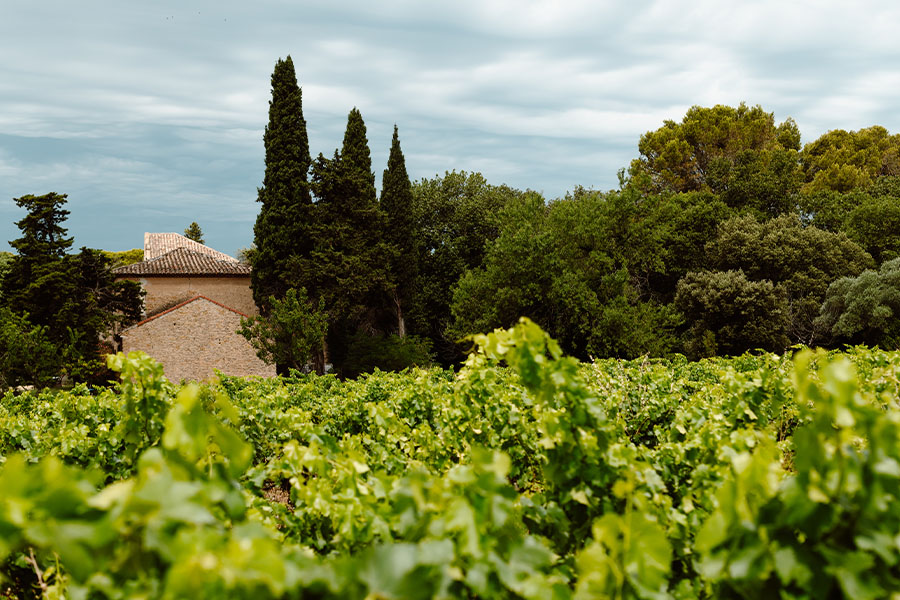Do you know the differences between organic wine, biodynamic wine and natural wine?
Are these methods linked to labels or individual practices depending on the estates and winegrowers?
How do they differ from conventional methods?
Discover the specificities of each cultivation method and the areas that practice them.
Let's start with the conventional method
Organic, biodynamic and natural wines are distinguished from conventionally produced wines.
Conventional viticulture winegrowers use chemical treatments to protect their vineyards from fungi, weeds and insects. Fungicides, herbicides and insecticides are respectively the synthetic products used, grouped under the common name of pesticides.
The objective is to minimize the presence of pests by spraying preventative treatments on the vines. Applications are made regularly according to a fixed schedule. Conventional viticulture guarantees constant harvests. Except in cases of extreme weather conditions (frost, hail, prolonged drought, excessive rain).
However, living organisms favorable to the vine are often also eliminated, the environment is sanitized and life in the vineyard reduced.
In the cellar, conventional winemaking uses numerous processes and inputs:
- temperature control during vinification,
- reverse osmosis,
- addition of cultured yeasts,
- adding sugar,
- of sulfur.
Conventional winemaking produces a stable wine, which achieves precisely the style desired by the winemaker . The only limit is the regulations in force in each country. It is in fact not permitted to add these inputs in an unlimited manner.
An approach derived from traditional culture: sustainable viticulture
It consists of using chemical treatments in moderation. Winegrowers rely on weather forecasts and data collection in the vineyard to define the necessary application dates and thus reduce the use of synthetic treatments to the strict minimum.
This approach leads to a significant reduction in costs in viticulture, as well as clear benefits for the planet and the health of winegrowers and consumers. Widespread, this approach is however not regulated and therefore differs depending on the area.
What is organic wine?
An organic wine, short for organic wine, must first of all be produced from grapes from organic viticulture, the methods of which are strictly defined by certifying bodies approved by local authorities ( Bio Suisse , Ecocert in Europe ). Organic viticulture guarantees that no chemical treatments have been applied in the vineyard .
On the winemaking side, certification bodies also impose stricter rules than conventional winemaking. The goal is to control processes and inputs, in order to obtain wines that are more respectful of the environment.
An example: the Château d’Aigueville
Château d'Aigueville is an estate made up of 100 ha of vines, 5 ha of olive trees and 15 ha of forests in the heart of the Rhône Valley . He holds Ecocert organic farming certification. He is the first wine owner to have obtained the Massif d'Uchaux appellation. Château d'Aigueville produces modern wines of great elegance, which are available in white, rosé and red.

Stricter specifications for biodynamic wines
Biodynamics is a school of thought based on the ideas of Rudolf Steiner, a 20th century Austrian intellectual. It consists of taking into account the interactions between all the elements of the universe and the cycles that punctuate it.
Organizations regulate and certify biodynamic wines, the best known being Demeter and Biodyvin . The established regulations are often stricter than organic wines, both in the vineyards and in the winery.
Biodynamic viticulture takes up certain principles of organic viticulture, notably the ban on chemical products, and integrates other practices: “preparations” (composts, herbal teas) are sprayed in the vineyard according to precise procedures aimed at to “activate” the plant. To go further, Demeter offers a detailed comparison table between organic wine and Demeter wine for Europe.
Many winegrowers follow the principles of biodynamics without being certified. The procedures are indeed long and expensive. But above all, it allows winegrowers to maintain flexibility and apply their own approach to biodynamics.
An example: Clos des Rennauds
Cultivated according to the principles of biodynamics, Clos des Rennauds is a 6,200 m2 vineyard in the heart of Chablais in the canton of Vaud . Since the 2000s, it has been planted with three grape varieties: Chenin Blanc , Arvine and Riesling, which make it possible to produce three expressive and aromatic vintages.

The most committed: natural wine?
Generally speaking, a natural wine, also called natural wine, refers to a wine produced with as little intervention as possible, from the vineyard to bottling . It is an even more committed approach than the organic or biodynamic approach. However, there is still no official legislation for the term natural wine, which means that practices can vary significantly from one winemaker to another . However, organizations are gradually offering specifications. For example, since 2019, the Union for the Defense of Natural Wines has defined the use of the terminology “natural method wine”, with precise constraints:
- certified organic or biodynamic wine,
- manual harvest only,
- use of native yeasts,
- no input (except addition of sulfur at a maximum of 30 mg/L).
A natural wine to absolutely taste: “Près Roc” Pet Nat
“Près Roc” Pét Nat is a fruity and refreshing sparkling wine made from Chasselas grown in Yvorne. It is made according to the ancestral method: the wine has undergone spontaneous fermentation in the bottle which gives it its fine bubbles ( all the details on this method here ). No inputs were used. The vintage is without added sulphites and unfiltered.


